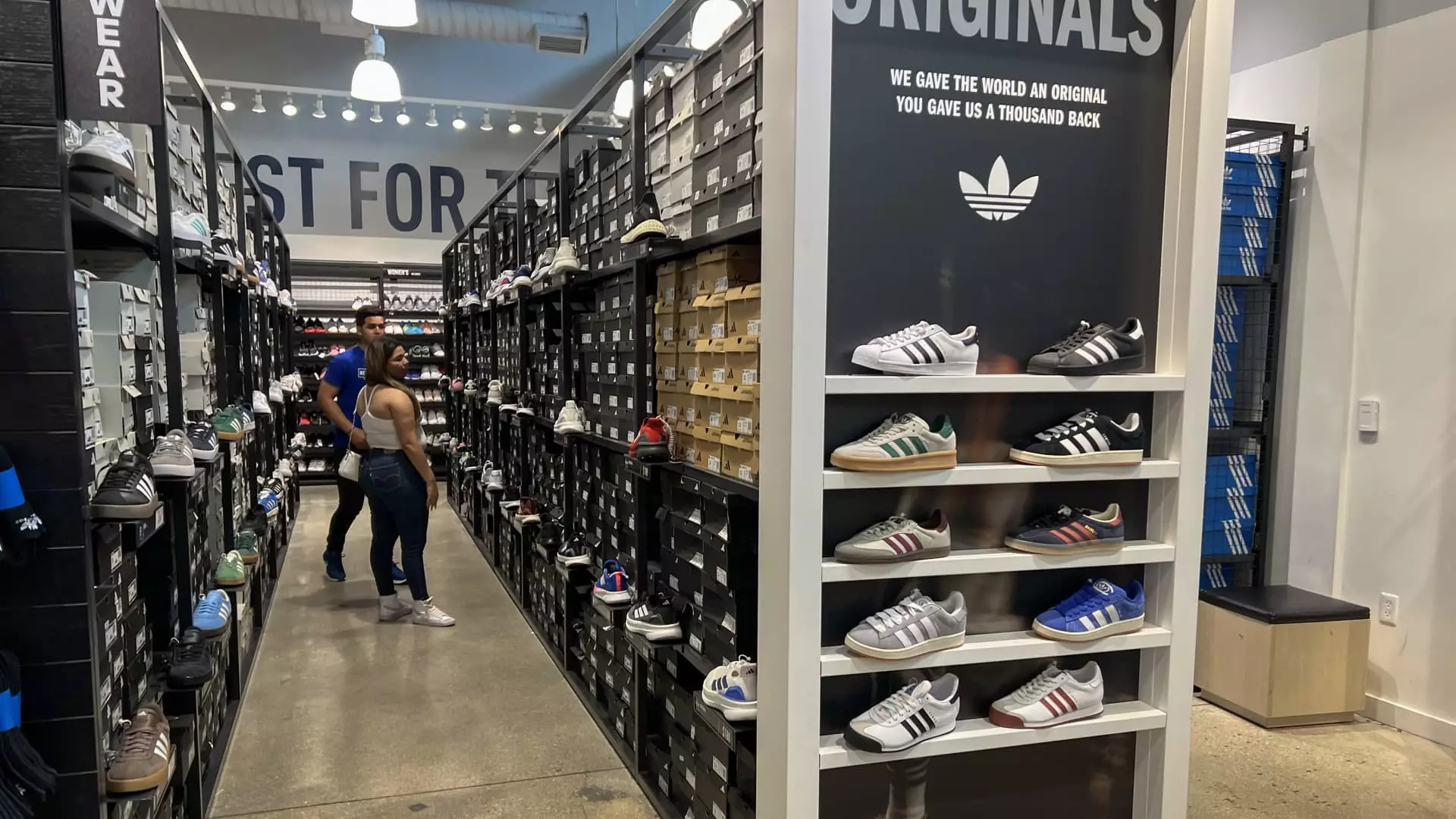In the ever-evolving landscape of global trade, few companies are feeling the pinch as acutely as Adidas. The sportswear giant has acknowledged that tariffs imposed by U.S. President Donald Trump’s administration could lead to significant price increases across all its products in the U.S. market. While many might dismiss this as a mere corporate concern, it reflects a deeper issue regarding how politics and business are intertwined, and the fallout can be felt all the way down to the average consumer. With tariffs at a staggering 145% on imports from China, Adidas finds itself in a precarious position—a situation that should prompt serious reflection from both consumers and policymakers alike.
In the Eye of the Storm: An Unexpected Economic Impact
In a recent statement, Adidas made it clear that the implications of these tariffs are not simply a line item on a financial statement but rather a looming shadow over the company’s future. The uncertainty created by the U.S.-China trade wars means that Adidas is unable to provide concrete forecasts for the remainder of the year, despite strong first-quarter profits. This uncertainty is a double-edged sword—while the company’s financial health appears robust now, the unpredictable nature of tariffs raises questions about long-term sustainability. Moreover, many other retail businesses, from low-cost e-retailers to high-end brands, are grappling with similar concerns, underscoring the widespread ramifications of a fractured trade policy.
Manufacturing Dilemmas: When Production Meets Policy
The complexities of manufacturing further complicate the equation. Adidas has admitted that it is unable to produce a significant portion of its products domestically—most of its merchandise is crafted in factories in countries like Vietnam and Cambodia. With potential tariffs hovering around 40% for these foreign productions, the company’s reliance on overseas manufacturing raises an essential question: Can a company thrive in today’s market without a domestic production strategy? Adidas’s predicament illustrates the flaws in current economic policy that prioritize short-term gains over long-term sustainability. Instead of fostering an environment for growth, the imposition of heavy tariffs only stifles opportunities for both corporations and consumers.
Brand Reputation: A Mixed Bag for Adidas
Interestingly, despite these challenges, Adidas has managed to reclaim its footing after a tumultuous period marked by its association with the controversial musician Ye (formerly known as Kanye West), whose antisemitic comments forced the brand to sever ties. The sale of the last of its Yeezy inventory marked a critical juncture for the company, as it sought to distance itself from controversy and focus on brand rejuvenation. However, the resurgence in its net income—up 155% in Q1—can be misleading, given the socio-political turmoil that lingers. Is this a genuine revival, or merely a façade that could crack under the weight of tariffs and consumer hesitancy?
The Consumer Dilemma: Higher Prices and Altered Preferences
Adidas’s caution about the potential for raised prices begs the question: how much flexibility do consumers have in their purchasing decisions? The current economic climate sees buyers becoming ever more cautious; rising product costs could lead to a shift in consumer behavior. Will shoppers continue to opt for premium brands amidst higher prices, or will they seek out more affordable options? This uncertainty is compounded by Adidas’s admission that it is currently incapable of quantifying the direct impact on consumer demand. In an age where brands rely heavily on consumer loyalty and sentiment, losing touch with the average buyer could have catastrophic consequences.
Retail in Crisis: A Broader Implication
This dilemma facing Adidas isn’t isolated; it signals a broader crisis in global retail. The turbulent political backdrop has distorted the equilibrium, and many companies may struggle to adapt. Analysts predict that essentially, without the threat of tariffs, Adidas might have confidently raised its projections for revenue and profit. Nonetheless, the restraint they’ve shown while reaffirming their existing outlook speaks volumes. The rising pressure on all sectors—whether luxury or budget retailers—demonstrates a fracturing economic system that could lead to stagnation if left unaddressed.
The current landscape highlights the urgent need for economic policies that balance the necessity for fair trade with the vitality of international collaboration. Whether Adidas can navigate through these trade barriers remains to be seen, but it serves as a compelling case study in the intricate dance between commerce and geopolitics.

Leave a Reply